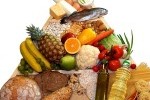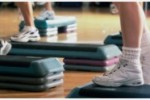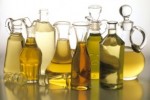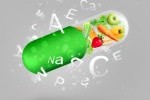Forum Replies Created
-
AuthorPosts
-
March 31, 2014 at 5:14 am #2479
“Probiotics are non pathogenic live microorganisms” (1). They benefit their host (humans) by competing with pathogenic (bad) bacteria, lowering the pH (making it more acidic) of the gastrointestinal tract (gut), making compounds that kill pathogens, and increasing the host’s immune response (1). There have been many studies showing probiotics to be beneficial for diarrhea. There was an experiment performed specifically on children with acute diarrhea that showed a reduction in how long the diarrhea episode lasted and the frequency of stools for children using probiotics (1). Another area where probiotics are used to treat diarrhea is after antibiotic use. Using antibiotics not only kills the pathogenic (bad) bacteria, but it can also kill the good bacteria in the human gastrointestinal tract. Probiotics are used to help restore the good bacteria and help to avoid diarrhea which is a common side effect of antibiotic use (3).
Probiotics have also been tested with many other gastrointestinal diseases, because the gut is the most likely area that could benefit from probiotics. Crohn’s disease and ulcerative colitis (also known as inflammatory bowel disease) are two gastrointestinal diseases that can cause diarrhea, rectal bleeding and weight loss. There was a study done on mice with inflammatory bowel disease and in this study they found that the mice treated with probiotics were resilient to weight loss. They also found that the other symptoms such as diarrhea and rectal bleeding were less evident in the treated mice (2). There are many other gastrointestinal diseases that have also been studied for treatment with probiotics, but for most of these studies (including the one mentioned above) there has not been sufficient evidence for clinical recommendations.
Probiotics are still fairly new and there is still a lot of research being done to better understand their capabilities. Therefore, this makes it hard to recommend using them. One area where clinical recommendations have been made to use probiotics is after antibiotic use. Hopefully as time moves forward there will be more evidence found for the use of probiotics (3).
References:
1. Applegate J, Fischer Walker C, Ambikapathi R, Black R. Systematic review of probiotics for the treatment of community-acquired acute diarrhea in children. BMC Public Health. October 2, 2013; 13(Suppl 3):1-8. Available from: http://web.b.ebscohost.com.dist.lib.usu.edu/ehost/pdfviewer/pdfviewer?sid=fd4be265-ebc9-4125-8953-495ce83515e9%40sessionmgr111&vid=6&hid=120. Accessed March 31, 2014.2. Eun-Hee K, Hua H, Ki Baik H, et al. High Concentrated Probiotics Improve Inflammatory Bowel Diseases Better than Commercial Concentration of Probiotics Journal Of Food & Drug Analysis. April 2, 2012; 20:292-295. Available from: http://web.b.ebscohost.com.dist.lib.usu.edu/ehost/pdfviewer/pdfviewer?vid=5&sid=fd4be265-ebc9-4125-8953-495ce83515e9%40sessionmgr111&hid=120. Accessed March 31, 2014.
3. Hickson M. Examining the evidence for the use of probiotics in clinical practice. (Cover story). Nursing Standard. March 20, 2013; 27(29):35-41. Available from: http://web.b.ebscohost.com.dist.lib.usu.edu/ehost/pdfviewer/pdfviewer?sid=fd4be265-ebc9-4125-8953-495ce83515e9%40sessionmgr111&vid=12&hid=120. Accessed March 31, 2014.
February 28, 2014 at 6:06 pm #2128Thank you for both of your responses, I most definitely agree with what you had to say. I think that sports drinks can be very tempting for a lot of people especially young adults, but the added calories are not beneficial for their diets. Also, the added sugar in these drinks not only bad for the individuals teeth, but could also lead to obesity and type 2 diabetes if they are a regular drink choice(1). Overall, sports drinks can definitely be good for athletes that have rigorous work outs, but are not necessarily the best option for those that are not working out.
1. Haifeng L, Yan Z, Gangqiang D, Glogauer M. Dietary Factors Associated with Dental Erosion: A Meta-Analysis. Plos ONE. August 2012;7(8):1-6. Available from:http://web.b.ebscohost.com.dist.lib.usu.edu/ehost/pdfviewer/pdfviewer?sid=94b91578-5d32-4e83-b24f-7942a9ac3869%40sessionmgr198&vid=7&hid=125. Accessed February 28, 2014.
-
AuthorPosts






